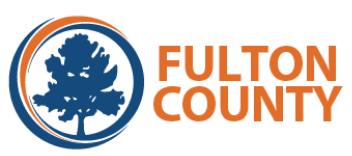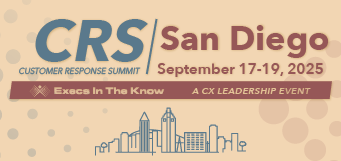In addition to containing trending and new data built around the experiences and perspectives of 111 senior CX leaders, the CX Leaders Trends & Insights: 2022 Corporate Edition report is enriched with powerful Practitioner’s Perspectives — a snapshot analysis from accomplished CX leaders representing top brands, each targeting a specific research result.
It is an opportunity for our industry’s best and brightest to share, in their own words, their insights on these preliminary results.
You can check out their perspectives below, or read and download the full CX Leaders Trends & Insights: 2022 Corporate Edition report here.
WORKFORCES
Given ongoing hiring challenges, how is your organization pursuing performance gains among your current team?
“Speed and accuracy are two of the main variables we’re always looking to optimize. We know the faster we can help a homeowner (or a sales rep) answer a question about their loan application, then the faster they’re able to start their sustainable home improvement project. It’s critical that we always have the right information available for our team members so they can answer any question accurately. In the past, I’ve been with companies that have optimized one over the other. Fortunately, at GoodLeap, we recognize these don’t have to be mutually exclusive — you can be fast and accurate. There is not an end destination at GoodLeap; we use a continuous improvement mindset to constantly look for ways to optimize these variables.”
![]()
Paul Brandt
Chief Experience Officer
Pg. 24
WORKPLACES
A few years in and the shift to WFH has been positive for many. What have been some of the most notable benefits for your organization and people in the shift to WFH?
“Even pre-pandemic, I have been a big proponent of WFH. So it is exciting to see that, for a majority of CX leaders, the shift to WFH over the last few years has been positive. Some of the most notable benefits I have seen on our team are the ability to keep talented, knowledgeable employees, allowing for a much healthier work/life/school balance, as well as no labor issues during high vacation times like the holidays. In the past, I have seen companies lose good talent because of changes in employees’ lives and needing to relocate. Now, in the new WFH world, that talent gets retained, which is beneficial for the employee and company because it reduces onboarding costs. I think the benefit almost everyone has seen is the work/life/school balance, not negating the fact we still need to pay close attention to mental health and the challenges that come with being separated from the in-person interactions. I throw school in the mix because with a healthier balance and less time commuting, employees (including myself) can have the flexibility to complete school or expand their education. Lastly, as some businesses see more callouts and vacation requests during the holiday seasons, we can accommodate for employees to work a few hours here and there wherever they are in the world!”

Jasmyn Haas
Vice President, Experience
Pg. 28
CX STRATEGIES
What does “customer first” look like at your organization, and what’s it mean for your customers?
“It is encouraging to see the increasing number of companies that are proactively choosing to place the customers at the center of their business. I think most people in the CX industry can relate when I say it is one thing to state it and it takes a mountain of actions to bring this statement to life. For woom, this looks like considering the customer experience in every one of our strategic initiatives, processes, and decision matrixes. It is also reflected in how our organizational structure is set up, which has CX as an even pillar to sales, marketing, operations, and IT instead of underneath one of these functions. Lastly, we have shifted the language from “prioritize CX” to “placement of CX,” which holds each of us accountable to start and end our conversations with the question, “How will this impact our customers?” In this regard, our founders led by example and, by extension, this same expectation and responsibility applies to every woom employee. At the end of the day, our customers should feel this in how we show up for them at each step of their journey with woom bikes — from the products we make to the stories we share to the service we strive to provide.”

April Obersteller
Director of Global Experience: EX + CX
Pg. 52
Company culture is a critical component in serving the needs of customers. What are some of the essentials in creating a customer-centric corporate culture?
“At Shipt, our customers are either members, shoppers or retailers, and the need to “walk in their shoes” is more important than ever. On top of answering contacts quickly and politely, today’s best-in-class teams are hyper-focused on continually improving the experience for our stakeholders and agents alike. An always-improving culture is set by leaders’ curiosity and engaged listening. Do leaders at your company prioritize customer centricity and hold regular routines to review sentiment? Do they shadow contact center agents to keep a pulse on the experience and most common contact topics? Do leaders invest in solutions that improve experience? At Shipt, growth is something that involves everyone. Recently, based on customer, shopper, and agent feedback, Shipt rolled out the ability for shoppers to drop orders if something came up before they started shopping the order. With the click of a button, shoppers no longer need to call or chat us for this action, and it gives us the flexibility to ensure orders are claimed by another available shopper. When you empower voices at all levels, growth becomes part of your culture, and your service center experience is better for it.”

Mark Killick
SVP, Experiential Operations
Pg. 54
PROGRAM DATA
Which three key performance indicators (KPIs) are most critical and garner the most attention in the management of your CX operations?
“A strong digital delivery system is the next evolution of SECU’s service offerings. The digital-first strategy respects the desire of our membership to choose the channel in which they want to be served. From a KPI perspective, this context is important, as our strategic plan is helping to shape the measures we will be moving the organization toward — more experiential-focused. With a clearer focus on experience, this also shapes how operational metric targets are set and how we’re leading our teams. We place more focus on quality, employee service-skill development, and behavioral coaching. How we deliver service and how that service impacts our membership is paramount.”

Jared Banesh
Executive Vice President, Member Experience Transformation
Pg. 58
Improving KPIs has been hard fought in recent years. What changes or initiatives have been most helpful in moving the needle at your organization?
“Moving the needle is generally considered a positive. However, it’s positive only if you’re moving the needle on the right things. The world has changed since 2020, and the way we do business and consumer behavior has changed along with it. That means if you have not recalibrated your key performance indicators to account for these changes, you’re probably not measuring the right things. For starters, contact center leaders need to reexamine the KPIs they track to include what matters most to customers and the enterprise brand. By default, that includes a new focus on employees. Are you emphasizing productivity over people? Satisfaction over sentiment? First contact resolution over customer churn? It’s likely, since measuring agent engagement has been long ignored, and now has jumped the line as a leading indicator of attrition. Moving the needle on lowering escalation rates, increasing tool utilization or boosting positive agent emotion might tell you more about how well your team is representing your brand rather than by how fast they are answering the phone.”
![]()
Lisa Oswald
Senior Vice President & Global Head of Customer Service
Pg. 59
LOYALTY
How is your organization identifying and tackling common pain points for customers?
“Fulton County Government has made a commitment to provide service accurately and efficiently to its customers across multiple touchpoints with minimal deficiencies by eliminating cross-functional disconnects. To do so, we consistently measure the emotional dimensions of our customers through customer journeys and by measuring performance and customer satisfaction. We routinely conduct satisfaction surveys on a monthly, quarterly, bi-annual, and annual basis that help us to identify pain points and service deficiencies. More recently, we have added Customer Satisfaction Kiosks in some of our more forward-facing departments that now measure satisfaction and the customer experience at the transactional moment. This survey method helps us to isolate fluctuations in service levels, track performance with actionable data, uncover potential causes for poor performance, address negative customer experiences immediately, and provide validity needed to make immediate adjustments where pain points exist. The addition of this new evaluation initiative into our customer service framework has had a direct impact on the overall customer experience and further aligned the needs of our customers with services provided by our agencies.”

Brigitte Bailey
Director, Customer Experience and Solutions
Pg. 63
INVESTMENTS & COMPETITIVENESS
Dissatisfaction runs high for the tech stack among CX leaders. What about your tech stack is or isn’t working, and what is your go-forward plan on improving the situation?
“To say I was in the 32% of the dissatisfied respondents would be accurate, but somehow that doesn’t portray the optimism I have going forward. Sure, we’ve been a company with financial challenges that limited our investment in contemporary omnichannel solutions and other tech stack enablers. That’s a convenient excuse that’s no longer applicable, as we’ve secured record IT investment this year, and we will be deploying a new case management tool with embedded analytics, while also making upgrades to our telephony stack. However, when considering only 31% of my peers are either very or satisfied with their current CX technology stack, it’s time we all step back and ask ourselves, ‘Why?’ Is it a lack of investment? Or perhaps an unsuccessful implementation that didn’t yield the desired results? According to numerous studies, nearly 70% of change initiatives fail. As such, with so many excellent tools in the marketplace, I’d suggest technology isn’t the problem — it’s the people and processes that need to get on board. That’s why we’re focusing our efforts on three key areas: 1. Front-line involvement in business requirements development and user acceptance testing 2. Joint project ownership and collaboration with our IT colleagues 3. Establishing a formal change management program Candidly, using change management tools and training has already yielded significant benefits and improved our odds for a successful deployment. If you’d like a copy of the Leader’s Checklist for Change tool we’re using, please email me: [email protected]. In closing, we’re on a path of CX maturity with investment and executive buy-in as critical foundational pillars, and we’re constantly challenging ourselves to execute with excellence against the vision/strategy we have set for ourselves.”
![]()
Jim Moloney
Vice President, Aftersales Business Center
Pg. 68
WE INVITE YOU TO EXPLORE OUR RESEARCH LIBRARY
Within the Execs In The Know community, a wealth of CX knowledge exists as a part of our CX Research library. As the appetite for industry research and data continues to grow, we will be evolving and taking our research to new levels.
Check out all of our research here.




